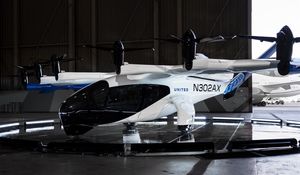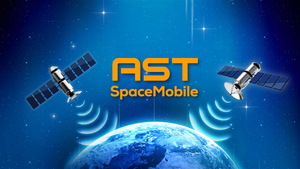By Meg Flippin Benzinga
DETROIT, MICHIGAN - April 17, 2025 (NEWMEDIAWIRE) - The solar industry has come a long way since the Atlantic Richfield Company opened the first utility-scale solar power plant in the U.S. back in 1982, generating 1.1 megawatts of power. Forty-three years later the industry is up to 592 gigawatts of power and growing, underscoring its explosive growth. But it’s not just the amount of solar being produced that has changed over the years; so have the technology and use cases, enabling the solar industry to scale significantly over the past four decades.

Take solar’s role in space, for starters. While NASA has long used solar to power spacecraft, satellites and even the International Space Station, advances have improved efficiencies, making solar a vital part of space exploration. For good reason – solar is clean, renewable and in abundance. And unlike fuel, it doesn’t harm the environment.
Perovskites Boost Solar Panel Efficiency
Advancements in solar for space exploration continue to grow as NASA scientists and researchers around the globe work to improve the efficiency and durability of this green energy captured by solar panels. Take NASA’s work with perovskites, a group of minerals that, when added to the solar panel,s can improve the efficiency of the panel. It enables solar panels to capture more light. So much so that these solar panels, with a layer of perovskites, are approaching 50% efficiency, something unheard of when NASA first started using solar back in 1958.
ROSAs Paves The Way For Flexible Solar Panels
Then there’s NASA’s work in developing technology to enable solar panels to be flexible and rollable, improving their use in constrained spaces. The first two sets of solar arrays used by NASA’s Hubble Space Telescope in the 1990s and 2000s were made possible by mounting solar cells on a flexible material so they could be rolled up to fit in the space shuttle cargo bay. Seeing the potential a few years later NASA began work on what is now known as roll-out solar arrays or ROSAs. Similar to how paper towels unfurl, they are lighter and cheaper to make than previous iterations from NASA.
CIGS Space Saving, Flexible Design
But it doesn’t end there. NASA is also studying copper indium gallium diselenide (CIGS) solar cells for several of its power needs in space. CIGS solar cells are attractive because they are thin-film photovoltaic (PV) cells that weigh little and are flexible and bendable.
Beyond the materials, NASA is working to develop a vertical deployable solar array system to power both human and robotic exploration on the moon. While most solar array structures are horizontal, on the moon vertical solar arrays will be necessary to maximize sunlight for human and robotic exploration.
UAVs Powered By Solar
Lets not forget solar’s role in powering unmanned aerial vehicles. Because CIGS solar cells are lightweight, flexible, durable and can perform well in the dark, they are becoming a choice for space exploration, drones and even ground vehicles.
These developments are happening thanks in part to Ascent Solar Technologies (NASDAQ: ASTI), the maker of featherweight, flexible and durable CIGS thin-film PV solutions. The company is innovating in the solar panel field, combining 20+ years of R&D, 17 years of manufacturing and a comprehensive library of IP and patents to position itself as a leader in the photovoltaics market. CIGS technology innovation is a key focus area for Ascent Solar, and the company reports making subtle, engineered changes to the technology and also applying a new approach to array assembly to account for the space environment, really opening up the opportunity for thin film.
Technology Advancing Solar
Ascent Solar says its thin-film PVs are made using cutting-edge CIGS with patented monolithic integration. The company’s patent-protected processes enable it to precisely apply layers of these elements on a thin (25-micron) polyamide substrate to create resilient and featherweight panels that convert sunlight into electric power.
The company’s R&D and operations teams are continuously investing in the performance of its thin film products, which it says positions it as a leader in the market. Take its focus on perovskite integration with its solar panels as one example. Ascent Solar says it’s actively translating several perovskite patents pending from its R&D lab to the production floor. Ascent Solar believes materials like perovskites, combined with Ascent's existing technologies, will provide “stair step increases in photovoltaic performance.”
All of that hard work seems to be paying off. The company counts NASA, DARPA and the National Renewable Energy Laboratory as partners, and recently entered into a collaboration with NASA Marshall Space Flight Center. The two, with support from NASA Glenn Research Center (GRC), are developing spacecraft that can receive beamed power using Ascent Solar’s CIGS PV modules. It’s part of NASA’s mission to develop the ability to do more in space at a fraction of the cost. Ascent promises to deliver that with its CIGS PV modules.
With Ascent Solar’s technology, energy is beamed from satellites or orbital vehicles to these thin, flexible PV panels affixed to the spacecraft via microwave or laser beam. Once captured in the CIGS PV modules, the spacecraft will be able to go further for longer periods of time. Plus, the spacecraft will be lighter and cheaper to make because it has fewer parts and needs less equipment to power it. That’s just one example of how Ascent Solar is innovating in the space.
With the solar market advancing, driven by technology, Ascent Solar wants to be a key driving force innovating in the sector. It is leveraging its IP, patents and industrial knowledge to take solar panels where “no panel has gone before” – just like NASA is doing with space exploration.
Featured photo by NASA on Unsplash.
This post contains sponsored content. This content is for informational purposes only and is not intended to be investing advice.
This content was originally published on Benzinga. Read further disclosures here.
View the original release on www.newmediawire.com






